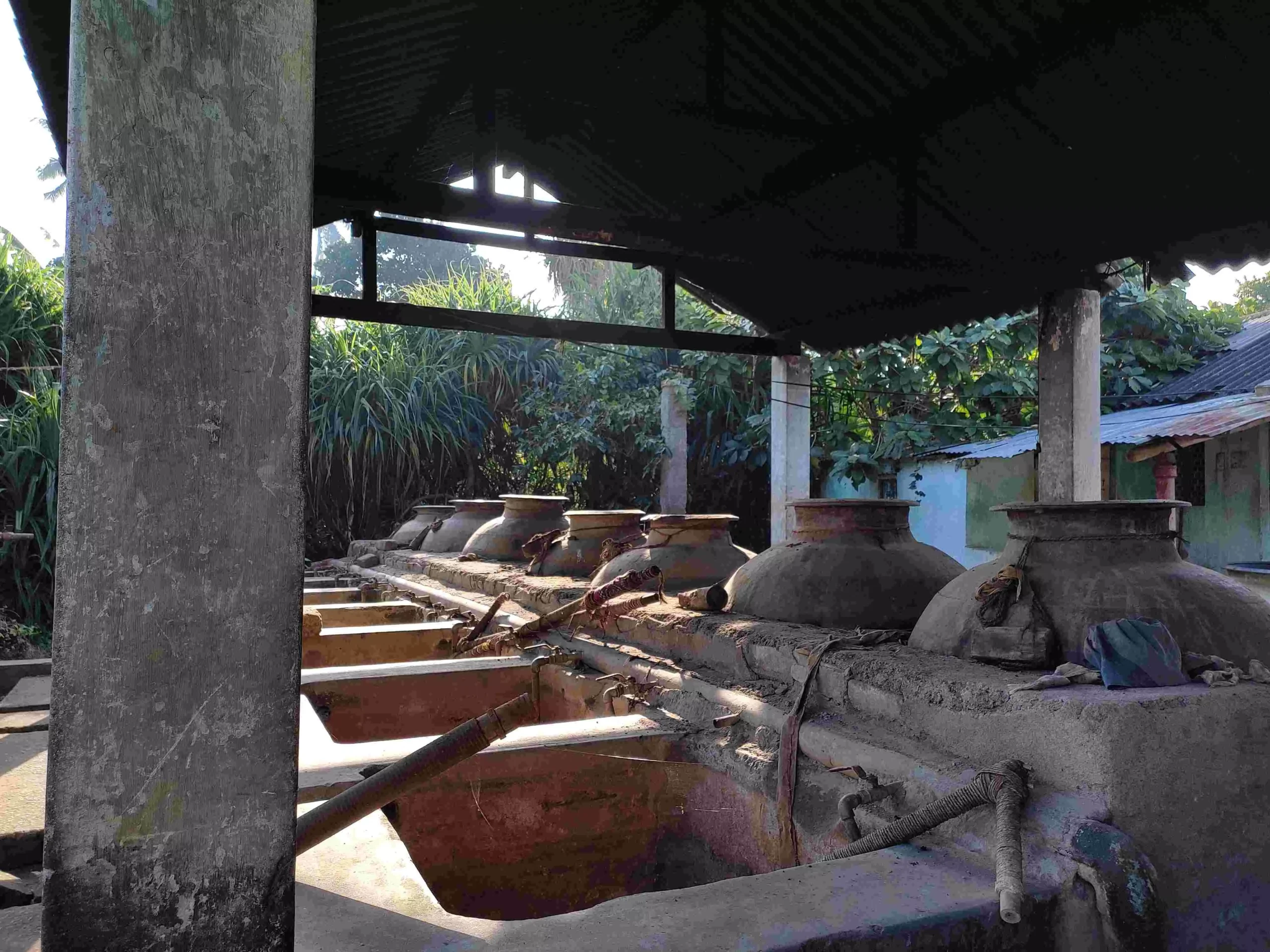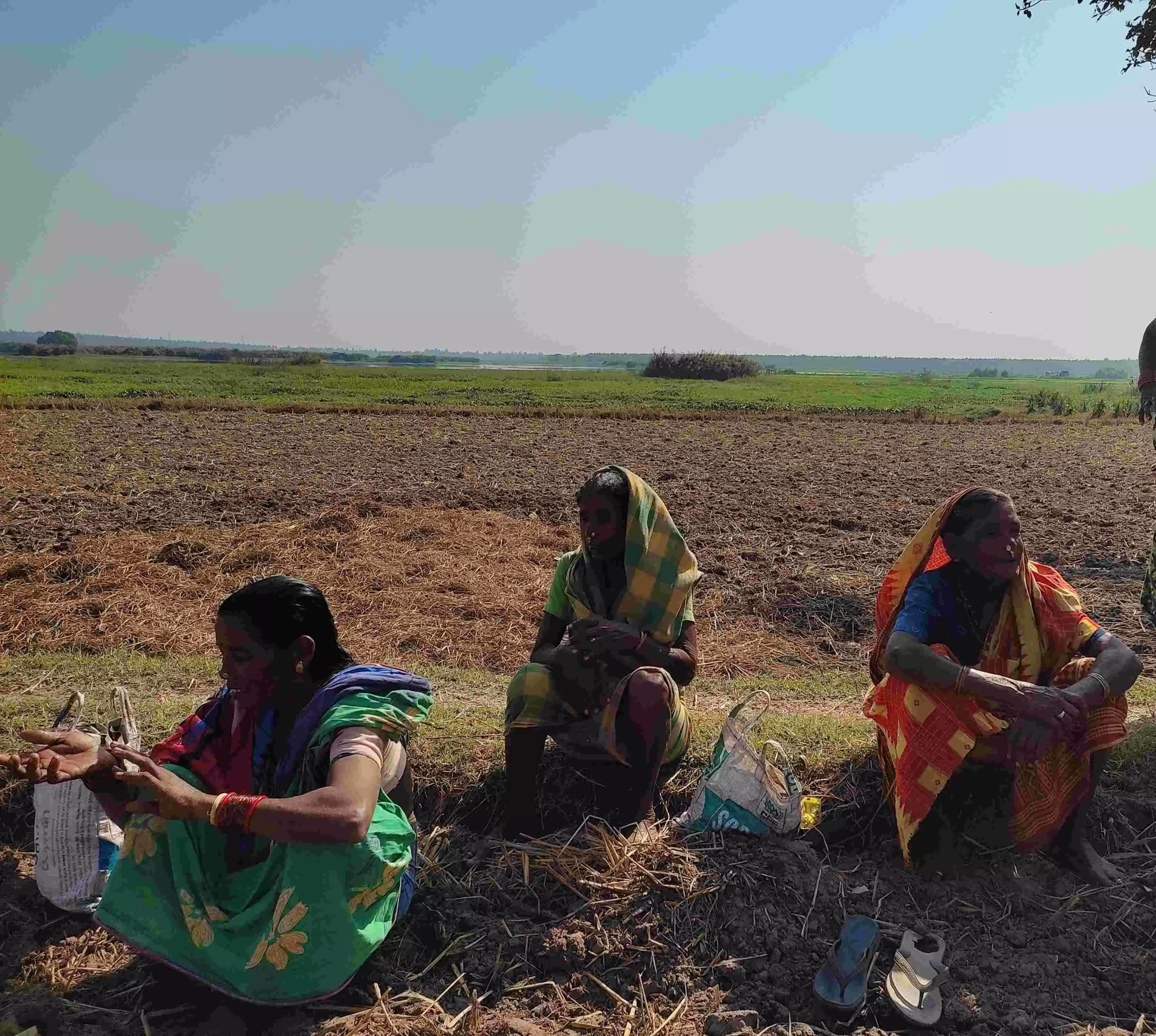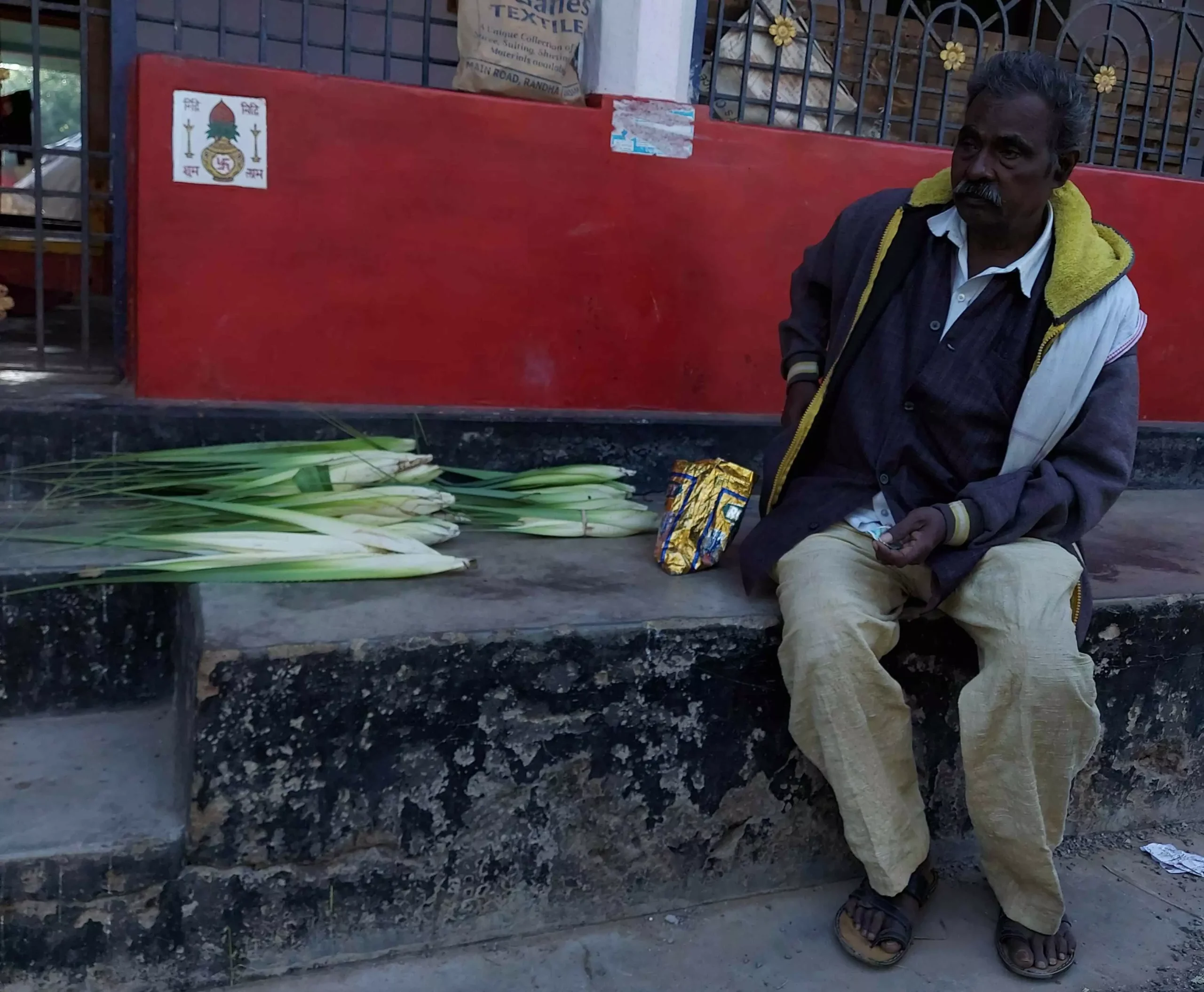Kirtipur (Ganjam), Odisha
Kirtipur is a fragrant village where around 400 families live. It lies in Ganjam district, Odisha, about 180 kms south of the state capital, Bhubaneshwar.
The heady scent from the kewda flowers (Pandanus odoratissimus) that grow in abundance hang over the village. Small trees and shrubs with dense branches, laden with the flowers abound everywhere. The flowers are locally known as kia.
“Most of us in the village are dependent on the kia for our livelihoods,” said P Jagannath, the mukhiya or the head of Kirtipur. Ganjam district where Kiritpur is located produces and supplies nearly 90 per cent of the country’s kewda essence, he informed Gaon Connection. Besides its heady fragrance, the kewra extract is used in medicinal preparations as it is said to have antibacterial and antiseptic properties.

Woman carrying haystacks on her way to the field. Photo: Pritinanda Behera
Nearly all the families in Kirtipur village have someone who is engaged in harvesting and processing the kia for its oil. The much sought-after Ganjam Kewda flowers also come with a GI (geographical indication) tag. There is an abundance of kewda flowers that grow in the coastal areas of Ganjam district, from Gopalpur in the north to Bahuda in the south, and the area is known as the kewda belt.
“The harvesting of kewda flowers and extracting essential oils from it, is something we have been doing for generations,” P Khageswar, a 27-year-old from Kirtipur, told Gaon Connection.

Freshly plucked scented kewda flowers. Photo: Aditya Dinesh.
Distillation of kewda flowers
Historically, the distillation of the kewda flowers began in Ganjam about 200 years ago, said the local inhabitants of Kirtipur. Today, there are 117 traditional distillation units or bhattis across 200 villages of the district.
Harvesting the male flowers (they are the ones most suitable for distillation), is a lot of hard work. A fully mature kewda plant, that is quite thorny, can reach up to a height of 15-18 feet and can produce approximately 3,500-4,000 flowers each year.
Once the flowers are gathered at daybreak, they are transported to the bhatti where the distillation process begins.

Deg-bhabka is used for the distillation process. Photo: Aditya Dinesh
The traditional deg and bhabka distillation process is still used, where the flowers are boiled inside huge cauldrons that are connected to a cooled receiver through bamboo pipes. The vapours condense and the liquid is collected, packed in huge galvanised iron drums of varying capacity, and exported to nearby cities as well as to other states like Uttar Pradesh.
Depending on the size of deg and bhabka, the number of flowers is distilled. The standard size of deg can take up to 400 flowers at a time and depending on the quality of the flowers about 10 to 15 litres are produced. According to the villagers, a jar of 25 litres of attar is usually exported at a price of Rs 15,000.
Most of the flowers are collected between July and September. They are cultivated and also grow wild in the coastal areas.

Farmers resting their weary bodies in the afternoon. Photo: Pritinanda Behera
Pandemic woes
But, things took a downturn when the pandemic broke out two years back. The harvesting and distillation process of the oil and perfume ground to a halt. Bhattis shut down.
“There was a huge loss in the flower business due to the coronavirus pandemic. Our main source of income dried up,” P Jagannath, the mukhiya (village head) of Kirtipur, told Gaon Connection.
“Before the pandemic knocked us off our feet, we sold each flower at nine rupees. But during the pandemic, getting two rupees per flower was also a struggle,” the village mukhiya said. “Time is of essence and we had to sell fast as otherwise the flowers would wilt and would be of no use to anyone,” he added.
Also Read: The history of fragrance: How attar or ittar has evolved from one era to the other
Villagers sold flowers at whatever price they could get and sometimes even gave them away free as otherwise the flowers would have just rotted.
“In 2020-2021, almost all work came to a stand still. Even now, when things have eased up, we are only back by fifty per cent, which is a tremendous loss for us,” Jagannath said.
But the village inhabitants of Kirtipur have rallied around. “We are determined and not afraid of hard work and we are looking for other ways to earn an income,” P. Apparao, a 62-year-old seller of kewda flowers, told Gaon Connection.

Man selling Kewda flowers at a very low price. Photo: Aditya Dinesh
Beyond kedwa flowers
Many of the villagers are now selling coconuts, bananas, or eatables such as chips, pickles and papads, said P Pushpalatha, a Krushak Saathi (farmer friend) from Kirtipur. Krushak Saathi is a government employee under the Rajiv Gandhi Krushak Saathi Sahayata Yojna who is responsible for ensuring financial support to agricultural labourers, and mediating between the government and farmers.
“People started selling vegetables they got from nearby villages in order to earn some money,” she told Gaon Connection.
A self help group (SHG) of about 10 to 15 women in the village was also helped by the government with loans to start small businesses, such as selling chips made of banana and potatoes, etc, the Krushak Saathi explained.
Meanwhile, the village mukhiya hoped the government would be more proactive in helping the flower and essential oil business in the village. “If there were government-owned factories in our village, we would not have to look outside our village for our livelihood. It would also tackle unemployment in the village,” Jagannath said.


















